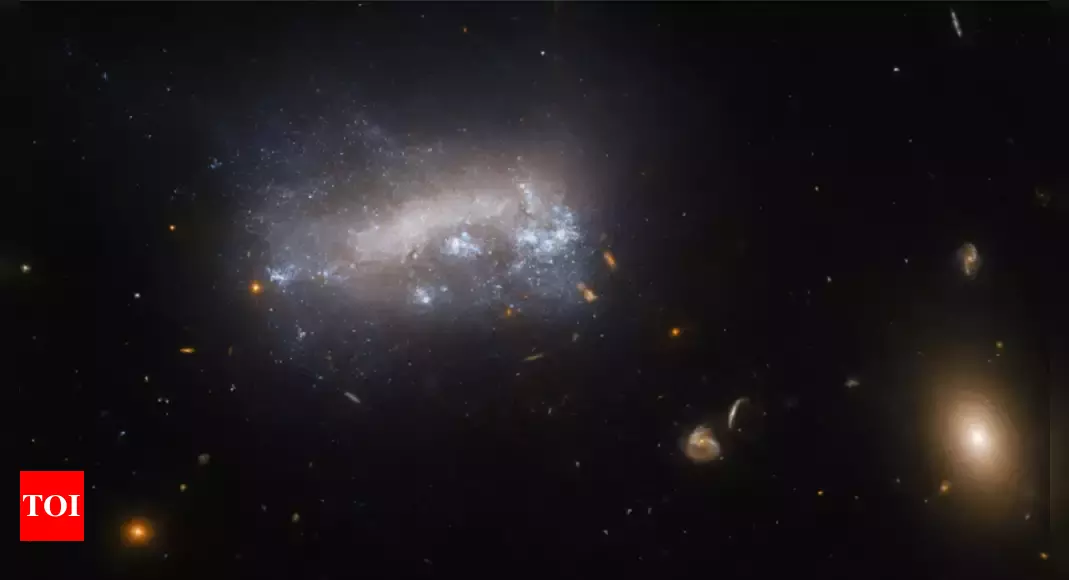
[ad_1]
This dwarf galaxy, among many others, navigates through the dense gas within the vast Virgo cluster of galaxies, experiencing the profound effects of ram pressure.
“A dwarf galaxy in the constellation Coma Berenices, located 54 million light-years away, is undergoing a highly-energetic event, captured here by Nasa Hubble. The little galaxy is undergoing a process called ram pressure stripping that is driving unusually high levels of star formation in regions of the galaxy,” Nasa said in a social media post.
Describing the image Nasa in a social media post said, “A dwarf spiral galaxy. The center is not particularly bright and is covered by some dust, while the outer disk and halo wrap around as if swirling in water. Across the face of the galaxy, an arc of brightly glowing spots marks areas where new stars are forming. The galaxy is surrounded by tiny, distant galaxies on a dark background.”
What is ‘Ram pressure’
Ram pressure, the resistance exerted by intergalactic gas and dust as a galaxy moves, plays a crucial role in shaping the destiny of these celestial bodies. It can strip a galaxy of its star-forming materials, hindering the creation of new stars. Conversely, ram pressure can compress gas within a galaxy, potentially enhancing star formation.
Describing Ram pressure Nasa said “Pressure makes diamonds, but ram pressure can make stars!”
Additionally Nasa said, “The gas and dust that permeate space exert pressure on galaxies. This resistance, called ram pressure, can strip a galaxy of its star-forming gas and dust, or may limit the creation of new stars. However, ram pressure can also compress gas in other parts of the galaxy, which can boost star formation. In this case, the galaxy appears to have absolutely no star formation along its edges, which bear the brunt of ram pressure stripping, but the star formation rates deeper within the galaxy are booming!”
Studying galaxy star formation
The data collected by the Hubble Space Telescope for this image of LEDA 42160 is part of an extensive project studying dwarf galaxies undergoing ram pressure stripping within large galaxy clusters like the Virgo cluster. Previous studies have shown that ram pressure stripping initially triggers the formation of new stars in larger galaxies. Researchers now seek to determine if this phenomenon applies to smaller galaxies like LEDA 42160.
Visible as bright patches on the lower-right side of LEDA 42160, these regions may indicate active star-forming areas spurred on by ram pressure stripping. By analyzing Hubble’s observations of LEDA 42160, astronomers aim to unravel the intricate processes that have shaped the features observed within this compact galaxy.
[ad_2]
